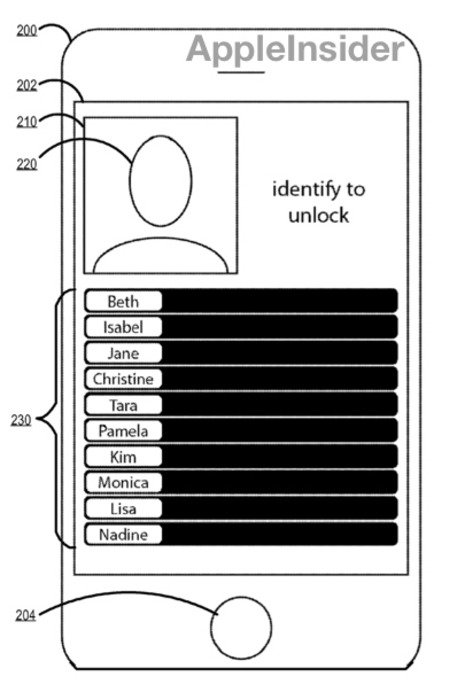Credit: U.S. Patent and Trademark Office
You've lost your smartphone. Or more worrying, it may have been stolen. Like most people, you've entrusted it with more and more of your personal data. Your first thought: just how secure are those emails, contact list, work documents and that app to access your bank accounts?
Almost all smartphones offer some sort of "lock screen" option, many featuring a password, PIN or pattern of screen touches or swipe gestures the user can set up.
They offer a layer of security, to be sure, but are not foolproof, and some surveys have found fewer that half of smartphone owners have bothered to set up a lock screen option on their devices.
And since you're constantly using your smartphone in public, the method to unlock your phone could be visible to prying eyes.
"For example, a thief sitting on a bus may notice the four characters that an unsuspecting person entered on the person's smartphone," a patent application recently filed by Apple says.
The application, titled "Image-Based Authentication," suggests an entirely new take on securing a smartphone or other mobile device like a tablet computer.
The system, the application explains, would replace validation using text or touch by "(1) selecting at least one image that depicts one or more objects with which the user should be familiar, where the image is stored persistently on the computing device, and (2) displaying the image. An object may be a person's face, for example."
In other words, the security barrier intended to keep unwanted eyes out of your smartphone could be a picture of your favorite Aunt Claire, presented as your lock screen and requiring you to correctly identify who it is.
You know your Aunt Claire, of course; it's highly unlikely a thief does.
The patent application includes mention of "multiple rounds," suggesting layers of security by displaying more than one image that has to be correctly identified.
So, Aunt Claire; correct. Your dog Biscuit; correct. And that generic-looking shot of you on the beach? Malibu. Correct.
That would be a lot of text to enter, of course, so an image in the application suggests instead a list of possible identification answers could be presented along with the image; a convenient single tap on the right one would suffice.
Convenient is a significant word, and is likely why so many smartphone owners choose not to utilize any security technique. Who wants to have to enter a password, PIN or touch the four corners of the phone screen in a particular pattern every time the phone is whipped out?
So smartphone makers continue looking for ways to offer increased security for users they might consider convenient to use; fingerprint scanners and facial recognition using a phone's camera are being investigated by several manufacturers.
Still, whether it's a password, a swipe, a fingerprint or dearly beloved Aunt Claire, security will only work if the user uses it.
Which brings us back to the half of all smartphone owners who don't bother to secure the considerable chunk of their personal life they're blithely carrying about in public where it can be lost -- or worse.
Walking up to their bank's ATM, it's not likely they consider punching in their 4-digit PIN inconvenient. You'd think their smartphone -- and its contents -- are worthy of the same.















